Virgel Hammonds and Beth Rabbitt on FullScale
Key Points
-
The FullScale merger aligns research, policy, and practice to accelerate competency-based learning and systemic change.
-
Distributed leadership, as demonstrated by the Co-CEO model, is a powerful way to leverage diverse strengths for innovation.
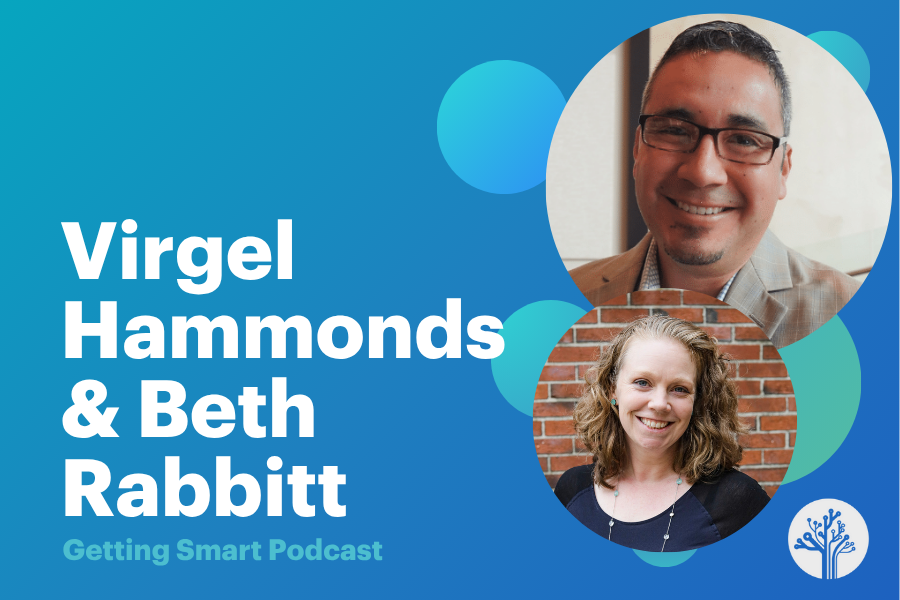
In this podcast episode, leaders Virgel Hammonds and Beth Rabbitt discuss how FullScale is accelerating competency-based and personalized learning by aligning practice, policy, people, and progress. By adopting a Co-CEO leadership model, they emphasize the power of collaboration, distributed leadership, and bold accountability to drive systemic change. This episode dives into the importance of coherence across education systems and the role of FullScale in creating tools, evidence, and partnerships to empower learners and educators. Tune in to explore how this unification aims to reimagine education at scale!
Outline
- (00:00) Introduction and Personal Interests
- (04:32) The Vision Behind the Merger
- (08:37) FullScale’s Ambitious Goals
- (11:52) Co-CEO Leadership Model
- (20:09) Accelerating Growth in Competency-Based Learning
- (25:22) The Future of the Annual Symposium
- (34:13) Closing Thoughts and Call to Action
Introduction and Personal Interests
Rebecca Midles: You’re listening to the Getting Smart podcast, and I’m Rebecca Midles. Welcome, everyone. I’m excited about this podcast. For over 20 years, I’ve been immersed in the world of competency-based learning. My journey has taken me from a teacher to a leader, and I’ve been a voice for this work at the national level.
Through it all, the Aurora Institute’s annual symposium has been a professional reunion for me. It’s a place where we come together to not only share ideas and grow our thinking but to challenge and inspire one another to move beyond the buzzwords and create equitable, learner-centered experiences and systemic approaches. Having served on the Aurora board and now on the board for this new organization, FullScale, I’ve had the chance to see this merger up close. I’m honored to welcome two leaders who are driving this new chapter in education, my friends and colleagues, Virgel Hammonds and Beth Rabbitt. Welcome.
Virgel Hammonds: A great introduction. Thank you, Rebecca.
Beth Rabbitt: Thank you.
Rebecca Midles: Thank you both for joining us. All right, let’s start with a warm, fun question. When you’re not busy transforming education, what’s a favorite pastime or a hidden talent—dare I say guilty pleasure—that might surprise people in the field?
Virgel Hammonds: Well, many folks who I have done this work with alongside know for me it’s the really bad dad jokes and puns. So I’ll share something different. You know, this work is so hard, and actually something I really love to do is lawn mowing—but not just lawn mowing, like lawn mowing while trying to be very specific about decorative lines, different angles, and different heights to create different visual perspectives. I really enjoy that. And in Maine, you have space to do that kind of work. As educators, policymakers, and researchers across the globe know, the work isn’t instantaneous. So to spend a day kind of leaning in, having some fun, and seeing the end result on that day brings me great joy.
Rebecca Midles: I was just thinking that I’m hoping everyone’s having fun, enjoying seeing this artsy side of you outdoors. And you’re right—you get to see the results of that right away. My husband would very much love that response. How about you, Beth?
Beth Rabbitt: Virgel just highlighted a difference between us because I am actively rewilding my lawn with clover. And I am totally disinterested in mowing, so I’ll have to have Virgel come by at some point. A less-known fact about me is actually I started my career working in emergency response and medicine as a ski patroller. And that’s actually something that I’ve kept up. I just got my wilderness first responder certificate a couple of weeks ago, and I’m headed back to ski patrolling as a volunteer this winter as my children ski race. I think that means when the zombie apocalypse comes, I’m going to be a great team member.
Rebecca Midles: You will be ready.
Beth Rabbitt: Totally ready. If anybody needs me, just give a call.
Rebecca Midles: You know, it’s kind of scary how often I think about things like that, so I appreciate you calling that out with EMT. And do you run also? I knew you skied, and it makes sense why you wanted to move where you are now, but are you also a runner like Virgel?
Beth Rabbitt: As a proud member of the ADHD family, I do all the things. I run, I ski, I bike, I row, I lift, I hike. I move every day to be able to be with my family and not annoy my colleagues.
Rebecca Midles: Understood. Virgel, is there anything else you want to add to that? Anything you want to respond to?
Virgel Hammonds: Geez, the activities—how Beth is able to balance all of those activities and being a great mom and partner, as well as an incredible leader in our FullScale organization—it just always amazes me. So, yeah, no, nothing else to add. Incredible.
Rebecca Midles: So listeners are getting a sense of the fun times it is to be around these two. All right. The news of the Aurora Institute and the Learning Accelerator joining forces to become FullScale is a major moment in the field of competency-based learning. Can you each share what, from your personal perspective, was the “aha” moment that made you realize this merger was not just a good idea but a necessary next step?
The Vision Behind the Merger
Beth Rabbitt: Yeah, so folks who know the Learning Accelerator, which I have had the opportunity to lead for about the last decade, know that our organization, I’m proud to say, was doing really great work understanding the change in practice that needs to happen on the ground on behalf of learners in more competency-based learning and personalized environments. Over the course of the last 10 years, we did a lot of work in capturing. We increasingly became a partner for research and evidence creation, and then more recently had been realizing that we needed to do more work to affect the conditions in which practitioners were working. You can have so many wonderful models, but changing more at scale requires moving some of the rules and allowing people to use resources more flexibly.
That was happening at the same time as we’d been working alongside what was formerly known as iNACOL for that same period. Virgel and I started talking about the intersections of our work and our hopes and dreams for the sector. I think post the elections last fall and some of the realization that TLA had sort of hit a moment where we were being successful, but our aspirations were higher, it seemed obvious that coming together with another entity that could help us swing bigger on behalf of kids was absolutely needed. For me, it seemed like the next right step for the Learning Accelerator’s journey and impact.
I couldn’t have thought about that without having the opportunity to talk to Virgel and learn more about his thinking as a leader and just have the recognition that we were so aligned in terms of what we were hoping for kids and what we were hoping for the sector. It was ultimately a really easy choice.
Rebecca Midles: All right.
Virgel Hammonds: Yeah, yeah. You know, the three of us have the real privilege of going across the country and speaking to leaders and folks in education communities that are thinking boldly about what might be possible. We get to lean into some of those conversations. And then oftentimes we leave those conversations, and nothing comes of that. But Rebecca, you and Beth are two people where you leave those conversations, and there’s action that comes as a result of those, right? And so as I came to the Aurora Institute, one of the big opportunities was thinking about who we could partner with as an organization. This was before merger consideration, but who should we partner with to really help make this work real?
The Aurora Institute had been really hovering at the federal and state level, helping to inform the policy conditions, doing some studies and impact studies around what it takes to help inform real positive legislation and regulatory frameworks to help create the flexibilities for educators and communities to run. But we really weren’t in the space of having direct impact with classroom educators, school leaders, and systems the way the Learning Accelerator had been. So when Beth and I started to chat, we started thinking about what it might look like if we were to do this together. Again, this was pre-merger opportunity, and this was a conversation we were having with others as well. Where might there be opportunities to best serve, best support, and accelerate innovation? What might that look like?
As those conversations continued, it became real—like Beth said—easy for us to connect around what if we actually did this at a deeper level together? What might it look like if we were to come together, not just serve alongside each other in very well-intentioned ways, but actually to do it as one organization? I was grateful because Beth is one of those leaders, educators, and partners where it was really clear from the very beginning that this is somebody I want to serve with and partner with and really think boldly about what might be possible. It came together quickly, and I’m grateful that our boards also saw the opportunity and leaned in, in ways that we perhaps hadn’t envisioned this time last year.
FullScale’s Ambitious Goals
Rebecca Midles: The name FullScale speaks to your ambition that you’ve been sharing. It’s a commitment to transforming education at full scale. What is the single most ambitious future-facing goal—more than one if you want—for the new organization? What does success look like for FullScale five years from now, three years from now?
Virgel Hammonds: Just as we shared, coming together as we believe it’s important to come together and best serve young people and communities, just as we did that as two organizations into one, it’s a real calling for us to ensure that that can also come together for the field. How might we learn? How might we bring catalytic organizations, communities, and practices together to best serve young people, families, and communities? For us, that is our absolute commitment and also a large challenge. How do we take all of what is working really well with a variety of organizations and systems and bring it together in meaningful ways to help drive new designs and new impact models when that’s just not how our systems and structures are currently designed to function? Our commitment is to seeing how we can make that happen.
The best part about our merger, just as our organization is really brand new, is speaking with organizations—other organizations—that say, “Yes, help us to make that happen, and here are some ideas that we have.” Being able to bring all of that together will be a terrific opportunity and challenge.
Beth Rabbitt: I think what is foundational to both of our beliefs is the recognition that no major big societal change or invention has ever been accomplished by a single organization working alone, be it a moonshot or the invention of the mobile phone. It was systems coming together and people coming together. The power of the network and the power of people learning from each other, playing complementary roles, and pushing each other. As we think about the education sector, we’re hoping to have school districts formally, or all the other folks who are inventing and supporting—organizations like Getting Smart—how do we become an organization that can cohere the work underway, honoring and celebrating all the awesome skills and capabilities and potentially even different lenses people have, but cohere the field around a vision for teaching and learning that is much more personalized, much more competency-based, and much more holistically developing?
As an organization, we want to offer people insight into the pathways to getting there, whatever their context. If five years from now, FullScale can say we’ve helped many folks around the sector make decisions more quickly and make progress more quickly through establishing evidence, connecting the dots for folks, making sense, but also creating vehicles to tackle shared problems, I will be really happy with this next five years.
Co-CEO Leadership Model
Rebecca Midles: Well, you’ve chosen a co-CEO model for FullScale, and I’m sure listeners are hearing the wonderful merging of these ideas and ways to look at this work. It’s a unique and often complex leadership structure. Can you walk us through the decision-making process for this? What are the benefits you anticipate from having two leaders at the helm? I mean, I’ve heard about the merging, and let’s maybe go down to the grain size and talk about that.
Virgel Hammonds: Yeah, this was not, again, not a difficult decision for us, Rebecca. You know, Beth and I, when we started having conversations about collective impact in a unified effort, it became clear that we also had different skill sets, right? Different strengths, different histories that help inform how we serve as leaders. But we also recognized—Beth referenced earlier—that we had a lot of common commitments and beliefs about teaching and learning, about leadership, about organizational structures. And we all—Rebecca, Getting Smart, you—we have served together where we talk a lot with learning communities about distributed leadership models, shared leadership, building a shared vision. For Beth and me, that’s just how we function, right? It’s absolutely a critical part of how we serve. And so it was easy for us to think about how we might lift or leverage each other’s strengths to build distributive leadership models so that we can best serve and lean into our individual strengths in meaningful ways. The key part was thinking about how we do that internally within our organization and also externally with our partners.
Beth Rabbitt: Yeah, so having been a CEO for the last 10 years at one organization, which is actually a pretty long tenure—yeah, I mean, nine and three-quarters, I would say, yeah, we’re going to round up—I’ve learned a couple of things. One is the CEO role as a solo entrepreneur is really lonely and very tough. And we expect our nonprofit executives to have all of the skills of the entire organization and to hold all the leadership decision-making. As a CEO, I loved getting to grow and think about the organization we are creating and our strategy. But that leaves very little excess energy to focus on innovation, on the spaces that we might not be doing well, on my own blind spots.
What I’m really excited about in this moment is Virgel and I both get to lean into our zones of joy and genius together on behalf of the organization, to co-own the stakes of that, and also hopefully push the impact that we were making as individual organizations together even further than we could in a single CEO model. Of course, it’s early days, and I think if you talk to our team, they’d say we’re still learning to do this. But maybe it’s okay for the nonprofit sector to abandon the notion of the single heroic entrepreneurial CEO who is the most important thing to the organization and think about what real collaboration and real leadership can look like and what the benefits might be.
Rebecca Midles: Zone of joy. I love that.
Beth Rabbitt: Zone of joy and genius.
Virgel Hammonds: Don’t forget the genius.
Rebecca Midles: Oh, sorry. Joy and genius. Don’t forget the genius. And I’m sure there are other ones we could add in there too. I love all the connections you made just now. For listeners who are feeling that when they’re leading a school doing transformation or a district leading transformation, and we talk about distributed leadership often without changing roles—you know, we change the role maybe in how they show up day to day, but their outward-facing title might still stay the same—and there’s always a little bit of tension in that. So I appreciate you recognizing that. When I have seen people do this work to make the big changes that you’re talking about, sometimes there are some challenges. And I think while you’re both bringing lots of strengths that you have in common, just knowing the two of you, what I would be excited about is also sometimes that healthy disagreement because I think real innovation comes out of sometimes those tensions and those conversations. How do you plan to handle those crucial decisions? I’m sure you’ve done some already where your perspectives might diverge. What is the agreed-upon process, if there is one, for navigating those moments to ensure a unified vision for FullScale?
Beth Rabbitt: I completely agree with you, Rebecca, in the sense that friction is where the cool stuff comes from. And great organizations—we know this from the research—the more diversity of perspective you have at the leadership level, actually the higher the performance is in any sector. Acknowledging that and seeing it as an asset rather than something to avoid has been really important. Now, Virgel and I have been very, you know, as part of our merger process, tried to get on the same page around the really big stuff like vision and values. We’re coherent around ideas of bold accountability and collective intelligence as being things that we want. And I think that sort of ability to be accountable for having the hard conversations, for surfacing—we even had one last night, but not in a really terrible way, but in a moment of vulnerability—is how we move through and make the better organization.
I think that we have, as leaders, articulated different areas where we want to individually run and check in versus where we have to be completely aligned. And we’re very early in terms of the team’s experience of our co-leadership. But I think we have a real commitment to it. I’ll say as TLA—and you know, there are different cultures coming in too—at the Learning Accelerator, for about the last eight years, we’ve used the concept of a rumble, which is whenever you sense that, hey, we have to get into something that might be a tension or we are disagreeing, so we need to state that and create the space for it. That’s something I’ve brought to the table and something we’ve been trying to figure out how it can fit in. But rumbling is so important across the organization to make it safe to have disagreement and also trust that you can move to the other side.
Rebecca Midles: Yeah, I love that. It makes me think about the storming and norming process of those conversations and what comes out of it.
Beth Rabbitt: Yeah, and not doing it for safety, but, you know, like establishing safety and having the disagreement be about getting better in the work.
Rebecca Midles: No, rumble sounds like leaning in, not being afraid. Yeah, I appreciate that. I’m going to be thinking about that one.
Virgel Hammonds: And you know, those rumbles or the opportunity to storm and norm together actually happen more openly in our organization than perhaps in other organizations. So it’s actually—we’ve created this culture where members of the team can come in and say, “I have a challenge, and here’s the opportunity,” or, “I have a thought,” or, “I heard you say, and I really want to unpack that some more.” But we do that in an open environment, right? Also, we do so in a way that’s well-informed by data. Like, “Here’s what I have. Here’s some thinking behind this hypothesis. What would you say, and how do we…” Again, with the idea of serving, making more informed decisions, and doing it openly and as transparently as we possibly can.
However, we also have to, as Beth referenced, sometimes take the opportunity where it’s early morning conversations or late in the evening after family is settled to say, “Okay, we’ve got to chat about this. Let’s have the conversation. What could we have done better? I’m still noodling on this thing that you said or this question that you asked.” And I think that’s important, right? And then the other part of that is being able to say that to the team as well, right? Like, “We had the conversation. We’re checking and adjusting based on that conversation,” or, “Now we have more information.” But the key piece that I think grounds us is that shared vision. Like, what are we working towards together, and does this decision move us along? Does it move us forward? It might take us a little bit longer, but what we have found actually with multiple minds on these structures is that we can actually accelerate the decision-making process. We can actually design faster and move more nimbly as a result of the co-model.
Rebecca Midles: I can hear lots of connections. I’m sure people can make these connections even with the structure they’re in as far as leadership. So I love that you’re highlighting that there are some strategies that people can take away, whether you have a co-CEO model or not. Let’s move into the critical juncture that we’re seeing in competency-based learning right now. There are a lot of systems out there, a lot of change. We’re seeing some merging, we’re seeing some reinventing of ways people show up in this work. How do you think this merger and creation of FullScale will accelerate the growth and adoption of personalized learning models? But also, what barriers and challenges in the field do you believe FullScale is uniquely now positioned to overcome that you couldn’t perhaps as separate entities?
Shorts Content
Accelerating Growth in Competency-Based Learning
Beth Rabbitt: Yeah, I think in this moment where there’s a lot of pressure on organizations—whether that be external pressures happening for nonprofits that are working their way through the funding environment, school system leaders that are facing community pressures in different directions—there’s this feeling of divisiveness and challenge. But what I reflect on is that I don’t think I’ve ever seen more agreement in our sector around the need for change and the need to be willing to evolve our models to better meet our learners’ needs and the needs that they will face in the future. There are lots of different people coming at that problem from lots of different angles, but I think there’s a lot of energy for reimagination and greater change at scale than there has been in my career.
So I think there’s both a moment in time where coming together right now to help people see themselves in each other’s work, to help pull people together around the common action points that might feel like uncommon combinations, is a really important role that we can play. I think that the other thing that our field is facing is a lot of incoherence. The Learning Accelerator had been working on practice and the resources for people, and Aurora had really been focusing on what progress would look like and how we think about what the policy needs to be. By coming together and focusing on practice, policy, people, and progress in a more coordinated way, we’ll help be more coherent to support the field to be more coherent and to work together across those lines because change actually can’t happen without all four of those things moving.
So I think that with FullScale, as we’re articulating our role, it’s really about how do we help produce the evidence needed to change minds and mindsets and change policy? How do we actually also create the evidence around action and help educators see this work and be able to bring it into their context? How do we do the bridge-building and dot-connecting to help people make sense of where they are and how they can connect better with others and what the opportunities are? And then, lastly, how can we actually, in a moment where resources are scarce, be places where people can come together to act collectively with more economy of scale and learning than is possible as an individual or as individual organizations?
Virgel Hammonds: You know, when we talk about what it means to be learner-centered, oftentimes people are looking for exemplars, tools, and strategies, and also the research to back it up. Like, how do we know this works? You want us to do transformative change—do we have the data to inform it? And do we know it works? If we’re going to do this with every child and really break up those traditional load-bearing walls that exist in our learning communities, we have to know that we have what it takes to make that happen and that it’s going to work.
At FullScale, we believe, as Beth said, that coherence and alignment of systems are absolutely crucial to make these new designs real and possible, as are the well-defined set of competencies and a well-informed, research-backed set of pedagogy and assessment structures that are tied to learning sciences and brain science. The field is calling for that. If we can help create, share, and amplify those best practices, then we can help accelerate that coherence and alignment of new structures in our learning communities. We think it’s just—it’s imperative, right? It’s absolutely imperative.
You asked the question about competency-based education. It’s really difficult to do competency-based education if you don’t have that strong pedagogical commitment to being very learner-centered and aligned to what we know about the science of learning. It’s very hard to do competency-based education if you don’t have those coherent structures and systems that are aligned not just internally within our schools but also with community, workforce, and higher education. For us at FullScale, I think, again, hence the reason for our name, is that we have to bring all of those big systems together in new ways, and we have to do it quickly.
The Future of the Annual Symposium
Rebecca Midles: Yeah, I mean, you talk about coherence of a system and all the things you surfaced. I’m already getting excited about the symposium and what it might look like. For many in our audience, the annual symposium has been a cornerstone event. Your announcement that you sent out as a team mentions that it will continue, of course, but with more depth and capacity. What can attendees, especially those—and I know that this news came out after the symposium was already set, so there’s probably going to be an answer for this year’s symposium, and there might be a different answer for next year’s when you co-design it from the beginning together—what can we expect in those coming years that might be different about the symposium? Maybe what might be different this October? And how will the integration of TLA’s strengths, as Beth was just mentioning—its focus on practical, actionable resources—be reflected in that programming experience in October?
Virgel Hammonds: Well, maybe I can talk about this year a little bit. With a fresh set of eyes coming together—TLA, Aurora Institute, and now FullScale—it’s really great to kind of speak to how we have quickly evolved and put into place new opportunities at the symposium. But maybe Beth can speak to some of the really cool ideas we’re thinking about for future symposia.
Just for folks in the audience that might not know, Rebecca, the symposium is the place to come and share and learn with other educators like those that are listening, other researchers, policymakers, and systems leaders who are thinking differently about how best we can serve young people and families. It’s the place to ask the questions, right? As we referenced earlier, the idea of internal rumbles, kind of the storming and norming process—this is the place to do that. “I have an idea. Here’s what we’re excited about. Here are challenges I’m experiencing. Help me to overcome it.” Help us to leave here—from New Orleans, October 25 through the 28—with actual tools, strategies, connections, and organizations that can help us move our shared vision in a different way.
We’re really excited about the 100-plus sessions of innovative educators like those that are listening here today. But also the networking opportunities with organizations that are leading systems change, those that are partnering with learning communities, states, and regions to put into place those coherent structures that Beth was referencing earlier. We continue to partner with organizations that are doing such great, tremendous work. For example, the Mastery Transcript Consortium will host an engagement on Saturday as well as the Learner-Centered Collaborative, both of which are doing such incredible work across the country. We’re honored to have them and their teams share a pre-conference.
We’ll also continue our pre-conference events on Sunday, where we’re really leaning into research initiatives that we as a field should be thinking about, considering, and doing together. We’ll also focus on policy design structures and opportunities in partnership with state leaders from across the country. Currently, about a dozen states are in attendance to share what they are learning, what they are doing, and what they are leaning into. Then we really launch—we kickstart our event. As always, our event is about young people and communities. So why not start with the voices of learners in learning communities that are doing just tremendous, inspiring, impactful work?
Lastly, on that opening day, we’ll also have a Leadership Journeys event where three leaders will vulnerably share their experiences and their journey to their current roles. But it will be in an environment that’s surrounded by music, dance, cheering, and joy. We’re really excited to bring this to everyone in New Orleans here at the end of October.
Beth Rabbitt: Yeah, so, you know, TLA has not historically been a convener of this size. So we’ve been doing a lot of learning from the Aurora team about the symposium, what it takes, and how we think about it. I think as we’ve been entering this year, we’ve been trying to think about how TLA can come in now as FullScale to create a little bit more action from the symposium, to offer some sessions that might be grounded in more on-the-ground data that’s coming out from attempts to scale some of this work, and some real conversations around what we’re seeing in the research. Both Virgel and I hope to do some calls for bold accountability for our sector to really reflect on where we are and what is needed for kids, for where we go next.
For folks who are attending, we want them to make the connections, celebrate, ask questions, but then challenge themselves to leave with some ideas for how they’re going to work together to get better. In particular, we’ll be hosting six sessions around different transformation points for the field, from looking at AI as an opportunity to increase personalization, competency-based learning, reimagining the staffing role, and thinking about how we will actually do the big, big blur from K-12 to workforce and college. We’ll use that as an opportunity point to synthesize what we’re hearing from symposium attendees about what is needed—not in 10 years, but in the next year—from funders, from each other, and from the evidence. We’ll use that sort of as a touchpoint to come back together next year.
I will say we are thinking really actively about this opportunity as a moment for really thinking about the design of the symposium for next year from a learner-centered standpoint and thinking about what it will mean for attendees to come and accomplish all they hope to accomplish, including being exposed to different ideas, seeing new tools, and connecting with new people. So definitely expect some big things ahead for 2027 that’ll be previewed a bit this year.
Rebecca Midles: So people come ready with some ideas. I love that. So you’ve got intentional opportunities for you to practice what you just highlighted, which was the research and development piece at the event, which we know is really important for systemic change. Wonderful. Beyond the content, what is intended—what are you hoping people take away, like that feeling that they’ll have from this year’s symposium? Is it a celebration, a launch, a call to action? I’m kind of hearing all three, of course. Do you have a main focus? Is one more important than the other? How do you hope the atmosphere will reflect that spirit of what we are now knowing to be FullScale?
Beth Rabbitt: Definitely want to acknowledge that for different folks, there will be different things that they’re coming for from the symposium. What we hope is that people leave really inspired to take their work further and believing that it is possible to make real, meaningful progress together in the next year toward a longer-term future that we want for kids. So, a sense of feeling like, “Wow, I’ve learned so much here. I’m inspired both by my own work and thinking, but by others. And I have ideas for how to keep on going and keep moving with others.”
Virgel Hammonds: Yeah. You know, I’m going to build on a previous comment that Beth shared, Rebecca, if that’s cool by you. This year, we started to do more active invitations to voices and organizations that perhaps don’t think the same way that we do, right? Like new voices that perhaps have not been experienced at the symposium, with the idea of surrounding us with new ideas, new provocations, new research, new data, and new policy that perhaps can help inform or deepen our resolve in new and unique ways. We think it’s important to consider a variety of options, right? Oftentimes, it’s one of the benefits of us coming together as two organizations into one at FullScale—that we have different ideas. But a fresh perspective can actually be that inspiration and that rejuvenation, right? Because so often we are focused on our community, our lane, what we are doing, that we miss an opportunity because we haven’t taken the time to immerse ourselves in perhaps different options, different considerations, and different designs.
So we have intentionally invited a variety of folks that might be new to the symposium with the idea of creating new inspiration for them as well, right? The field is so diverse with ideas, with humans, with structures, and with designs. Let’s really lean in together, right? And make this real for one another. Our organizations came together in this really unified effort in service of supporting the field in new and different impactful ways. We hope the same can be said for those that are attending the symposium.
Rebecca Midles: Great point. That’s what I’ve always loved about this gathering and other gatherings too. I’m partial, of course, to this gathering. But I’ve always loved the fact that when you bring people together in that kind of collaborative spirit and network with, like you said, even for yourselves, those big ideas that we agree on but have very different ways of approaching or experiencing—and intentionally put us in new, challenging contexts—it makes us think, “Okay, yeah, this is still true in that situation, but this isn’t, and why? What can we learn from that?” That innovative spirit that comes from those challenges is probably the driver of why I actually am where I am now at the organization I work at. I love that challenging way of framing and being questioned and just having those tough conversations. I think it’s important for our field. We certainly are in a new place today than we were a year ago, and certainly at the origins of iNACOL and Aurora. So it makes sense that we set up a structure for us to evolve and iterate alongside the field.
For our listeners who are educators, policymakers, and community members deeply invested in this work—who may or may not be going to the symposium—I don’t want to make it feel like if you’re listening to this and not going to the symposium, you’re missing out. You might feel that way and come next year. But what is the message that you would want them to take away about this new chapter for your organizations coming together and the movement you are leading?
Closing Thoughts and Call to Action
Virgel Hammonds: That’s such a great question, Rebecca, and I’m going to lean on a common theme for us. We didn’t talk about our organizations coming together as a merger. We talked about a unification, and we firmly believe there’s just such an opportunity for us as the field—as multiple complex systems and complex layers and complex realities—that it’s so crucial for us to come together to think, as Beth said earlier, boldly with different levels of accountability than we’ve ever had before to redesign new structures. But here’s the piece—not us as a sector in isolation, but us as a community together, right? How might we do that in a far more unified structure, collaborative network, in a way that can drive immediate impact?
Oftentimes, we’ve built structures, we’ve built designs, added convening, and not much comes of it afterward, right? Our commitment, our goal, is unification with accelerating impact. How do we create collective impact? How do we do that together? It’s our call to action. It’s what we believe in. It’s what we’re committed to helping make happen. And we’re counting on organizations like your own and others across the country and across the globe that are really thinking boldly about what might be possible.
Rebecca Midles: We are living in a world of acceleration, so I appreciate that call. I mean, I think it’s needed, and we are feeling that in all the roles that we show up in. So thank you. Virgel and Beth, thank you both for an amazing conversation. It’s truly inspiring to hear your shared vision and your intentionality behind the creation of FullScale. I can’t wait to see everyone at the first-ever FullScale symposium in October. I’m going to have to wait, but, you know, it’s tough. Thanks so much for everything you’re doing, and thanks for being here today. See you all in person soon.
Guest Bio
Beth Rabbitt
Beth Rabbitt is co-CEO of FullScale. She is a nationally recognized expert in education innovation and blended and personalized learning. Prior to becoming CEO in 2016, Beth was a Partner on The Learning Accelerator’s start-up team, leading the organization’s work to develop educator training systems and research on emerging teaching and learning models and practices. Beth brings over 20 years of experience in the K-12 nonprofit, philanthropic, and private sectors, having worked as a teacher, consultant, researcher, and funder. Most recently, prior to joining TLA, Beth was a Doctoral Resident and Director of Human Capital at a start-up school system in Newark, NJ, an Associate Partner at the NewSchools Venture Fund, a consultant to and with Education Resource Strategies, and the founding Doctoral Fellow at the Harvard Innovation Lab. Beth is a Pahara-Aspen Education Fellow and serves on the board of several nonprofits, including the Portland Parks Conservancy, Catalyst:Ed, and GiveThx. She earned a B.A. from Dartmouth College and a doctorate (Ed.L.D.) from Harvard University, where she was an inaugural cohort member in the University’s Doctor of Education Leadership program. Beth is based in Portland, Maine, where she lives with her husband and two daughters. As a parent and educator, she is inspired daily and urgently to create school experiences that better meet the needs of every child, everywhere.
Virgel Hammonds
Virgel Hammonds, a nationally recognized leader in education innovation, joined the Aurora Institute (now FullScale) as CEO in 2024 with over two decades of experience working alongside young people, educators, communities, districts, and policymakers as they endeavor to become more learner-centered. Having most recently served as Chief Learning Officer at KnowledgeWorks, Virgel has forged partnerships with national policymakers and local learning communities across the country to redesign learning systems to become more learner-centered. Prior to his time at KnowledgeWorks, Virgel served as superintendent of the RSU 2 school district in Maine, where he collaborated with five communities to develop and implement a curriculum designed to ensure mastery of standards by all students. Before serving as superintendent, Virgel was a high school principal at Lindsay Unified School District in California. There, Virgel helped implement a personalized learning model where learners didn’t earn letter grades, but rather are awarded mastery for subjects in which they’ve proven to be proficient.
Currently, Virgel also serves on the PBLWorks Board, the Learner-Centered Collaborative Board, and Jobs for Maine Graduates Executive Board. Additionally, he is Board Chair Emeritus of the Aurora Institute and a former member of the CompetencyWorks Advisory Board.
Virgel holds a bachelor’s degree from the University of Massachusetts Lowell and a Master of Education from Fresno Pacific University.
Links
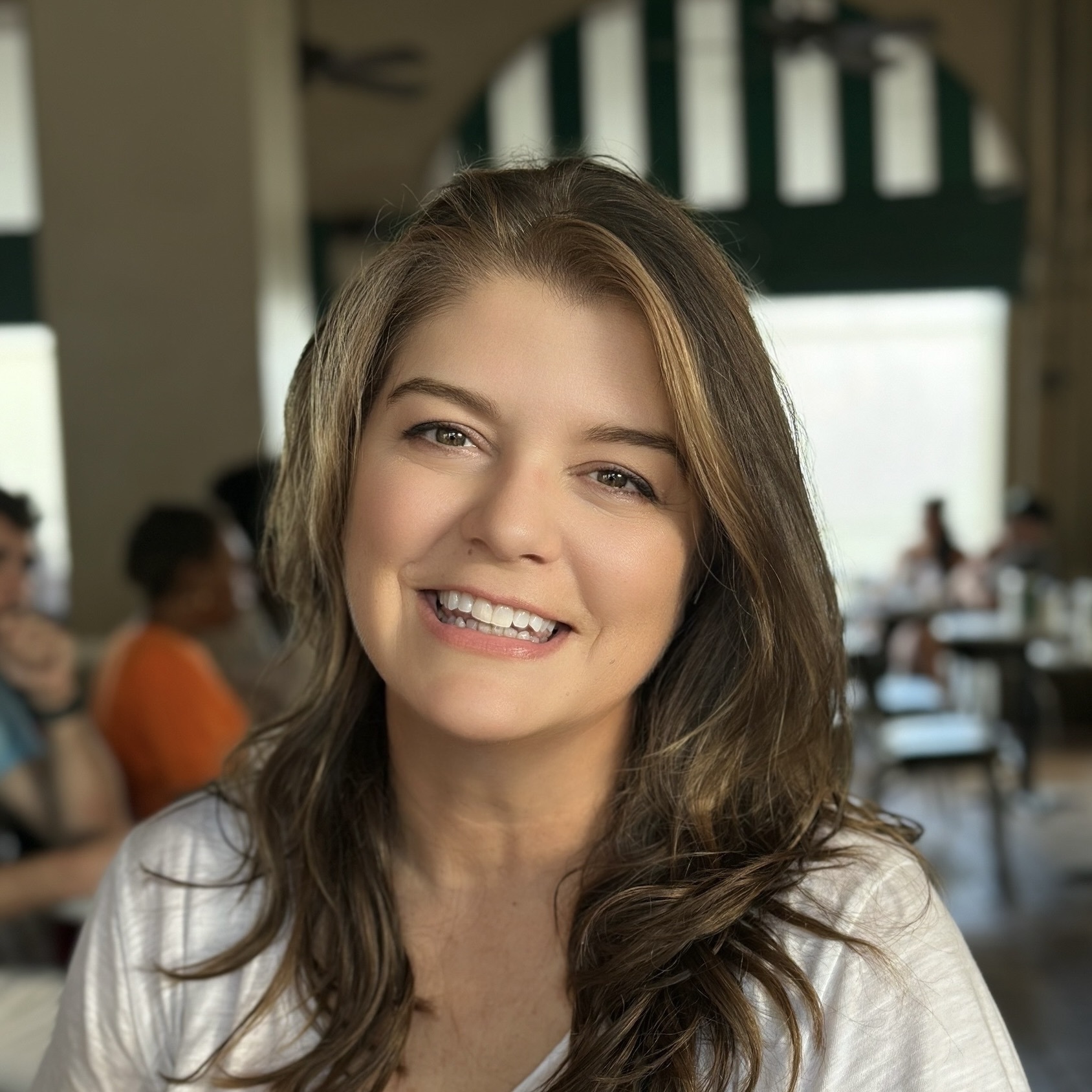


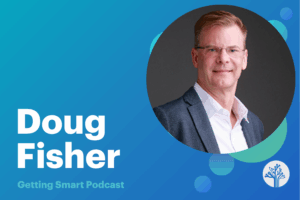
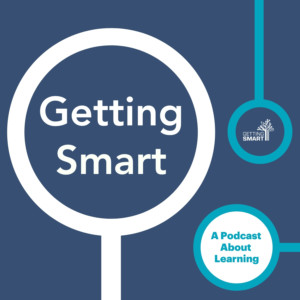

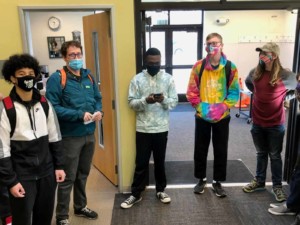

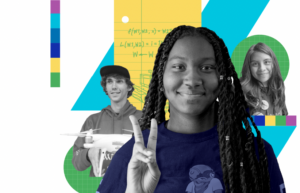
0 Comments
Leave a Comment
Your email address will not be published. All fields are required.